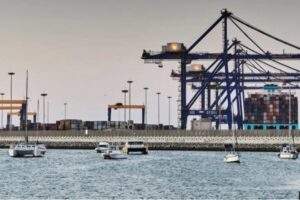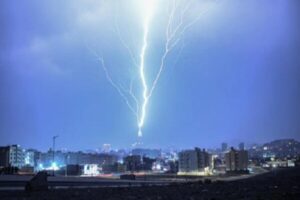By Wesam Bahrani
It is unrealistic to observe the genocidal Israeli war on Gaza without understanding its strategic dimension, in particular the current phase of the Palestinian struggle for freedom from occupation.
The daily war crimes committed by the Israeli regime’s military in Gaza make it easy for the global audience to watch with horror the brutality of the occupying regime and the suffering of Palestinians.
The Israeli regime has a long history of massacring Palestinians and Arabs. But, now with the advent of social media, the world is waking up to the harsh reality of this child-killing machine.
It is essential to return to the Operation al-Aqsa Storm (Al-Aqsa Flood) on October 7, 2023. The facts on the ground remain that the victory of the Palestinian resistance in the world’s largest concentration camp will go down in history above everything else in the ongoing Israeli genocidal war on Gaza.
Everything related to this historic victory in the besieged territory last October is linked to regional developments after Hamas dramatically shook the Israeli regime’s intelligence and security apparatus.
The Palestinian resistance is not fighting at the moment because it has a mission. The mission was to some extent achieved on October 7. Right now, it is fighting to defend Palestinian civilians.
These broad-daylight Israeli massacres and war crimes are indeed barbaric and join the long and dark history books of the Israeli occupation.
Yet, the historic Palestinian victory will always be the defining goal in any negotiations and the operation that changed the military equation between the Gaza resistance and the Israeli army should not distract observers from the mission of the resistance.
October 7, 2023, accomplished this mission to a large extent. It was a mission that destroyed the Israeli army’s self-proclaimed military superiority over the Palestinian resistance.
All efforts by the regime’s military and intelligence officials to reverse this equation and resume normal services to their American masters have failed to materialize.
The mission that restored Palestine on the map has also seen the Palestinian struggle back in its rightful place alongside all the rights of Palestinians that had long been ignored by the international community despite being enshrined in international law.
Al-Aqsa Storm is what achieved this. After decades of silence, the state of Palestine sits at the top of the agenda, where it belongs. Governments across the globe, along with meetings between world leaders rushing back and forth to West Asia and beyond, are discussing Palestine with the seriousness it deserves.
A Palestinian state with (currently occupied) al-Quds as its capital is back on the table among top officials who had forgotten that there was a Palestinian state in the first place.
All Israeli, American and British military attempts to return West Asia to how it was before Operation al-Aqsa Storm have proven futile. They have not and will not succeed. Not in this lifetime.
If Americans seek to go to war on behalf of its proxy, illegitimate entity in West Asia, it would effectively end the Israeli occupation of Palestinian land.
The Israeli regime has been defeated, its global image has been disgraced, its economy is in shatters, and its army in Gaza is enduring what the US faced in Afghanistan – a disgraceful drubbing.
Militarily, the Israeli army is all over the place against the resistance in Gaza.
To advance in urban warfare, Israeli special forces need their backup units to secure and hold on to the areas that the elite forces had captured so the latter can advance to the next area.
After more than four months of unbridled aggression, the Israeli military has not achieved this simple military strategy in one single spot in the entire Gaza Strip. Its ‘special forces’ can’t hold onto an area, not to talk about backup units that are in total disarray.
Two months ago, the regime regularly announced that it had taken control of northern Gaza. Today, Hamas is still fighting in northern Gazan neighborhoods, as well as central and southern Gaza.
Where does this leave America? The country that promised protection to the Israeli regime on October 7, the country that has been supplying arms to Tel Aviv worth billions of dollars?
In the aftermath of Operation al-Aqsa Storm, the US sent its aircraft carriers and military assets to West Asia, instructing Tel Aviv to focus on Gaza.
Never in the history of the Israeli occupation and all the wars it has waged has the US provided so much support to the regime in Tel Aviv. It has supplied more than $260 billion to Israel since World War II but the kind of support it has given to the Benjamin Netanyahu regime since October 7 is unprecedented.
Militarily, diplomatically, politically, as well as in the media, and so much more because the regime has been defeated.
The recent reports of tension and disagreements between Israeli and American or British leaders is part of the Western media psychological war to distract viewers from the reality, which is that Tel Aviv and Washington are literally tied to the hip.
Washington and London are publicly calling on Tel Aviv to think carefully before expanding its genocidal campaign to Rafah. This is while Capitol Hill is racing against time to ship more bombs to the Israeli military that will arrive in Tel Aviv just in time to drop on the civilians in Rafah.
Nevertheless, the last thing America wants is a war of attrition with the Axis of Resistance in West Asia. Yet the Israeli military has proven incapable of achieving anything in Gaza, it can’t compete with the Palestinian resistance and is targeting women and children of Gaza in a bid to pressure Hamas.
That has opened up three notable West Asian fronts: anti-Israeli resistance movements in Lebanon, Yemen and Iraq.
Some commentators in the region have tried their best to downplay the resistance of Hezbollah in Lebanon and Ansarullah in Yemen against the Israeli regime. It hasn’t gone down well for these pundits.
Hezbollah has displaced tens of thousands of Israeli settlers in the northern occupied territories, by the regime’s own admission, and carried out more than 1,000 military operations since October 7.
Some estimates have put the figure of displaced settlers at over 250,000.
This is Hezbollah’s contribution to the Axis of Resistance. Never in the history of the Israeli regime have settlers been displaced. Against the backdrop of the mediators that traveled to Beirut calling on Hezbollah to end its operations, the Lebanese resistance sent a clear message: Its resistance operations will cease when the Israeli slaughter campaign in Gaza ceases.
Ansarullah-led government in Yemen has imposed an embargo in the Red Sea on Israeli vessels transiting or docking in the occupied Palestinian ports. All the American and British warships deployed to the waters, and all US-UK attacks on Yemen have failed to deter the Yemeni military or end its embargo on Israeli maritime navigation.
Furthermore, all of Washington’s indirect messages sent to Yemen to end the Israeli naval blockade and all the White House incentives to have Sana’a airport and Hodeidah seaport fully functional, the payments of all Yemeni civil servants and promises to avoid adding Ansarullah to the US list of terrorist organizations have failed to force change in the Arab country’s strategy.
The Yemeni resistance, operating from the poorest country in West Asia, has responded in line with its courageous national ancient history by rejecting all American offers.
Yemen says the war started in Gaza and will end in Gaza. Until then, no Israeli ships will be docking in the regime’s ports, and all US-UK attacks have only expanded the range of Yemeni fire to Israeli/American/British vessels and warships.
Yemeni resistance leader Abdul Malik al-Houthi hailed a “major victory” for the resistance movement in a speech on Tuesday, saying the US and UK failed to secure the passage of any ships heading to Israeli-occupied ports over the last week.
“They were unable to protect these ships. They can no longer protect even American-British ships, and this is a real and major victory for us,” he asserted.
US bases in Iraq and Syria have been subject to some 200 attacks by the Islamic Resistance in Iraq since October 7, again in solidarity with Gaza. American attacks on Iraqi soil have not only failed to deter the will of the resistance but increased their determination to end the US occupation.
Again, some analysts on prime-time TV shows can’t help but make viewers cringe by dramatizing a US bomber that “flew so much distance” from the United States to Iraq and attacked “vital military infrastructure” belonging to the Hashd al-Sha’abi on the Syrian border (in true Hollywood style).
And so what? What’s the difference if a US warplane took off from an aircraft carrier in the region? And what is “vital military infrastructure”? Within minutes, the Iraqi resistance fired missiles attacking US bases again, inflicting heavy damage.
The US says it does not seek a wider war in the region. But, as things stand, the Biden administration is blindly heading to a war of attrition in the region in a bid to please an Israeli regime premier who is knowingly escalating regional tensions to escape a court trial and a possible prison sentence.
Wesam Bahrani is an Iraqi journalist and commentator.
(The views expressed in this article do not necessarily reflect those of Press TV.




